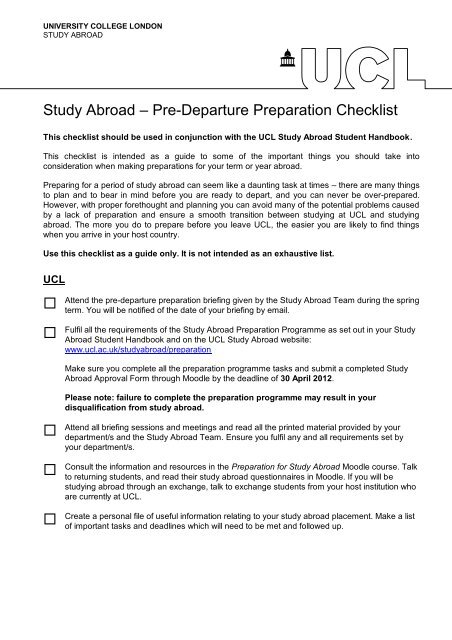
The Unveiling of Fate: Deconstructing How UEFA Champions League Draw Pots Are Determined
Few events in the football calendar ignite as much anticipation and speculation as the UEFA Champions League group stage draw. It’s a moment of truth, where the fate of Europe’s elite clubs hangs in the balance, determining their path through the continent’s most prestigious club competition. While the draw itself is a televised spectacle, brimming with tension and glamour, the underlying mechanism that dictates which teams end up in which "pot" – and thus, which opponents they can potentially face – is a meticulously structured process, far from random.
Understanding how these draw pots are determined is key to appreciating the strategic depth of the Champions League. It’s a system designed to balance competitiveness, reward historical performance, and ensure a fair, yet challenging, journey for all participants.
The Purpose of Seeding: Balancing the Scales
At its core, the division of teams into four pots serves a singular, crucial purpose: seeding. This prevents the immediate formation of "groups of death" featuring four of Europe’s absolute strongest teams, and conversely, avoids overly weak groups that offer little competitive challenge. By distributing the top-tier clubs across different pots, UEFA aims to create more balanced and compelling groups, ensuring that the competition remains engaging from the outset. Each group will contain one team from each of the four pots, with additional restrictions to prevent national rivalries in the initial stage.
The journey to determine a club’s pot placement begins long before the draw ceremony, rooted in a complex interplay of domestic league performance, European success, and UEFA’s intricate coefficient system.
Pot 1: The Elite’s Sanctuary – The "Champions Pot"
Pot 1 stands as the most coveted position, reserved for the undisputed cream of the crop. Since a significant rule change implemented in the 2015-16 season, Pot 1 is no longer solely determined by club coefficients (though these still play a vital role for other pots). Instead, it operates under a "Champions Pot" principle, comprising seven specific titleholders:
- The Reigning UEFA Champions League Winner: The team that lifted the trophy in the previous season automatically secures a spot in Pot 1, irrespective of their domestic league performance or coefficient. This is a direct reward for being the undisputed champions of Europe.
- The Reigning UEFA Europa League Winner: In a nod to the growing importance of Europe’s secondary club competition, the Europa League champion also earns a direct berth in Pot 1 of the Champions League draw. This provides a significant incentive for teams competing in the Europa League.
- The Champions of the Top Six UEFA-Ranked National Associations: Based on the UEFA Association Club Coefficient rankings (which reflect the overall performance of clubs from each country in European competitions over a five-year rolling period), the domestic league champions of the top six associations automatically qualify for Pot 1. As of recent seasons, these typically include England, Spain, Italy, Germany, France, and Portugal.
The "Spillover" Rule: A crucial nuance in the Pot 1 determination is the "spillover" rule. If either the Champions League winner or the Europa League winner (or both) also happens to be the domestic champion of one of the top six ranked associations, their Pot 1 spot "rolls down" to the champion of the seventh-ranked association. If a third spot becomes available (e.g., if both European champions are also top-six domestic champions), it would then roll down to the champion of the eighth-ranked association, and so on. This ensures that Pot 1 always comprises exactly seven different domestic champions plus the two European titleholders (or their replacements).
This rule change in 2015 was significant because it diversified Pot 1. Previously, it was simply the eight highest-ranked clubs by coefficient. The new system ensures that domestic league success is highly valued, and it prevents a scenario where a league like the Premier League or La Liga might have three or four teams in Pot 1 due to consistently high coefficients, potentially leading to less diverse groups.
Pots 2, 3, and 4: The Reign of the Club Coefficient
While Pot 1 celebrates recent championship success, the remaining three pots – Pot 2, Pot 3, and Pot 4 – are determined exclusively by the UEFA Club Coefficient. This is where the historical performance and consistency of individual clubs in European competitions truly shine.
What is a UEFA Club Coefficient?
A club’s coefficient is a numerical value that reflects its performance in the Champions League and Europa League over the preceding five seasons. Points are awarded for:
- Wins: 2 points for a win in the group stage or knockout rounds.
- Draws: 1 point for a draw in the group stage or knockout rounds.
- Bonus Points: Additional points are awarded for reaching certain stages of the competition (e.g., reaching the group stage, round of 16, quarter-finals, semi-finals, or final). These bonus points significantly boost a club’s coefficient.
- Association Coefficient Contribution: A club’s total coefficient for a given season is also partly influenced by 20% of its national association’s coefficient for that season, ensuring that clubs from stronger leagues get a slight boost even if their individual performance is modest.
The sum of these points over the five-year period, combined with a percentage of their association’s coefficient, forms a club’s total coefficient score. This score is then used to rank all clubs participating in European competitions.
Placement in Pots 2, 3, and 4:
Once the seven (or eight, if there’s a spillover) teams for Pot 1 are identified, the remaining clubs that have qualified for the group stage are ranked according to their individual UEFA Club Coefficients.
- Pot 2: Comprises the next eight highest-ranked clubs by coefficient, excluding those already in Pot 1. These are typically powerhouse teams that might not have won their domestic league but have consistently performed well in Europe (e.g., runners-up from top leagues, or third-placed teams with strong European pedigrees).
- Pot 3: Consists of the next eight highest-ranked clubs after Pot 2. These are often strong mid-tier European teams, or clubs from slightly less prominent leagues that have had good runs in recent seasons.
- Pot 4: Contains the eight lowest-ranked clubs by coefficient among the qualified teams. This pot often includes domestic champions from smaller leagues, or clubs that have navigated through the rigorous qualifying rounds.
The Role of Qualifying Rounds
It’s important to remember that not all teams directly qualify for the Champions League group stage. A significant number of clubs must navigate through preliminary rounds, first qualifying rounds, second qualifying rounds, third qualifying rounds, and finally, the play-off round.
When a team successfully emerges from these qualifying rounds and secures a spot in the group stage, their pot placement is determined by their existing UEFA Club Coefficient. Their performance in the qualifying rounds themselves does not directly add points to their coefficient for that current season’s calculation for pot determination (though it will contribute to their coefficient for future seasons). Instead, their historical five-year coefficient is used to slot them into the appropriate pot alongside the direct qualifiers. This means a club like Dinamo Zagreb, which frequently qualifies through playoffs, might end up in Pot 3 or 4 despite being a domestic champion, simply because its coefficient isn’t as high as teams from top leagues. Conversely, a team that narrowly finishes fourth in a top league but has a strong European history (e.g., Arsenal, Manchester United in past years) could still end up in Pot 2.
Draw Restrictions and Nuances
Beyond the pot determination, the actual draw ceremony adheres to a set of crucial restrictions designed to enhance fairness and manage logistics:
- No Two Teams from the Same National Association: This is the most fundamental rule. No two clubs from the same country can be drawn into the same group. If a team is drawn that would violate this rule, they are automatically placed into the next available group. This ensures national diversity in each group and prevents immediate domestic clashes.
- Political Restrictions: For geopolitical reasons, UEFA maintains a list of associations whose clubs cannot be drawn against each other (e.g., Ukrainian and Russian clubs).
- Broadcasting and Scheduling Considerations: To optimize television coverage and ensure that matches are spread out across different kick-off times, UEFA often splits clubs from the same national association into "red" and "blue" pairings. If one club from a pair is drawn into Groups A, B, C, or D, the other club from that same pair is automatically assigned to Groups E, F, G, or H, and vice versa. This is not about pot determination but about managing the fixture list.
- No Direct Group Rematches: While not a "pot" rule, it’s worth noting that if a team from a particular association has already been assigned a group, subsequent teams from that same association cannot be drawn into that group, further reinforcing the single-country rule.
The Evolution and Impact of the System
The current system, particularly the "Champions Pot" rule for Pot 1, was introduced to address concerns that some domestic champions from smaller leagues were consistently relegated to lower pots despite their domestic success, facing disproportionately difficult groups. By guaranteeing Pot 1 status to champions of the top leagues and the European titleholders, UEFA aimed to reward domestic consistency and ensure a greater diversity of top-tier clubs in the most favourable pot.
This structured approach to pot determination fundamentally shapes the Champions League narrative. It dictates potential rivalries, influences team strategies (do you aim to win the league to get Pot 1, or just qualify for the prestige?), and contributes to the drama of the draw. While some might argue that the system still sometimes creates "groups of death" due to the sheer strength of clubs in Pot 2, the underlying logic is sound: to reward consistent excellence, ensure competitive balance, and ultimately, to set the stage for the most compelling club football tournament in the world.
From the complex calculations of club coefficients to the strategic allocation of domestic champions, the UEFA Champions League draw is a testament to meticulous planning. It’s a system that, while sometimes seemingly arcane, is meticulously designed to transform a random selection process into a carefully orchestrated spectacle, ensuring that the road to European glory is challenging, fair, and above all, utterly captivating.



